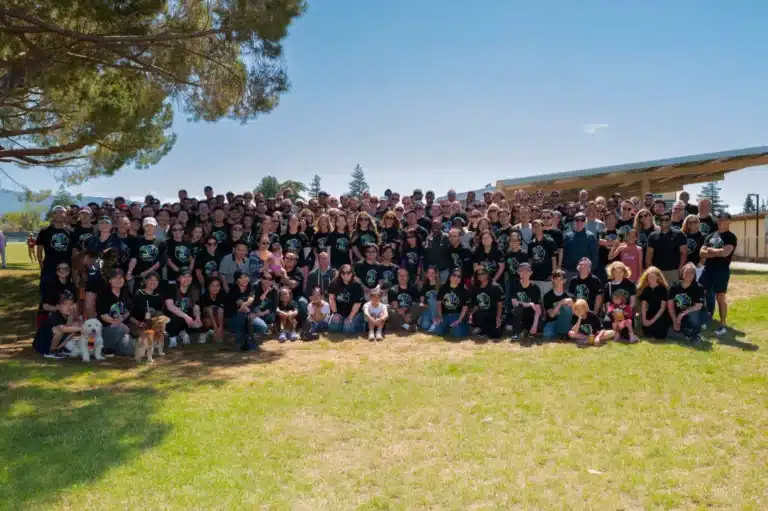For some of us, streaming has always been a part of our lives. Others lived through the birth of the internet, and still others will remember a time when there were only a handful of TV networks and not even cable television. No matter how you experienced the growth of over-the-top (OTT) streaming, all of us are squarely in the middle of the OTT revolution. How did we get here? And where will this technology take us?
How OTT got started
To understand how we got here, we must start at the beginning of network television.

In 1939, RCA began broadcasting NBC, the very first television network, and for the next four decades, NBC, ABC, and CBS dominated TV. In 1941, AT&T laid the first coaxial cable, which made cable television possible, but it will still be a little over a decade before cable became a mainstream delivery mechanism.
Regulations and standards drove—and still drive—the direction of the television and cable market. In 1953, the National Television Standards Committee (NTSC) standard paved the way for color TV and by 1972, the FCC began easing regulations on cable operators. So, when RCA launched the Satcom satellite in 1975, it opened the floodgates and allowed HBO, the first pay-TV network, to syndicate content around the country. By the 1970s, the first cable networks, notably C-SPAN, Nickelodeon, and ESPN, started to emerge.

In 1984, the Cable Act significantly deregulated cable, and with this deregulation, there was an explosion of new cable operators that became the first major competitors to broadcasters until satellite TV entered the market in the ‘90s.
1994 saw DirectTV become the first satellite TV system. Then in 1996, cable providers spent $165 billion to overhaul their networks for high-speed internet over the next eight years. These upgrades were essential in setting the stage for OTT. The digital video recorder (DVR) was also critical in this evolution. In 1999, Americans got DVR which taught people how to be in control of the content they watched—what, when, and how.
By 2009, we had the introduction of Web 2.0, the first iPhone, and analog TV’s switch over to digital, all of which pushed a sense of being able to watch whatever you want, whenever you want—even on a mobile device. Up until this point, media companies were focused on the technology challenges of delivery, operating their own delivery networks to reach viewers. With the advent of high-speed internet, new OTT providers emerged without the limitations and complexities of operating their own networks. But delivering content over someone else’s network presented its own challenges.
In the early 2010s, the FCC established rules and regulations around OTT, and smart TVs fueled a whole new set of OTT providers.
Advances in technology along with government regulations allowed OTT to exist, but why does OTT now dominate our viewing patterns?
Why OTT?
Netflix has been most synonymous with the OTT revolution. The truth is that the internet is public, and it scales way better than mailing DVDs. Consumers also wanted to be able to stream content on their many mobile devices whenever they wanted, which turned out to be good for content providers too, because this allowed them to go directly to consumers. TV and cable networks used to license content to operators where they got most of their money—not through advertising—but with OTT, this model is slowly dying.
Pay-TV is on the decline; now monetization efforts are put toward subscriptions, ads, and premium video-on-demand. COVID also forced a whole new business model for OTT providers—the theatrical release of content over the internet. Think Warner Bros. premiering films in theaters and on their HBO Max platform or Disney allowing subscribers with Premier Access to pay a little extra per month to gain early access to movies on Disney+. Now even the silver screen is on demand.

Where will OTT take us?
There are a few challenges that will shape the way that OTT evolves and what the future might look like.
Media consolidation
Last year, Netflix spent $17 billion on original content alone. That doesn’t count the technical infrastructure or content delivery platform. It’s expensive to create content, and it’s expensive to get that content to consumers with the quality they demand, on all the devices they want. This means that more media consolidation is likely over time.
Quality of experience matters
Technically, the cable television experience is more controlled, there’s a single bitrate, and content is purpose-built for one device so there’s only one delivery combination possible. OTT is delivered over the often-overcrowded public internet, adaptive bitrate is a must, and content needs to be available on thousands of devices, so there are over 150 million delivery combinations. The scope of OTT content delivery is huge. This means that quality of experience measurement and the ability to understand the entire consumer journey are more important for content providers than ever before.
Viewer’s choice
Even if not all of us grew up with streaming, many millions of us now stream as our main source of entertainment. We have grown accustomed to watching whatever we want, whenever we want, on any device we choose. What used to be controlled by publishers, by those king networks of the 1940s, and upstart cable providers, now is firmly controlled by consumers. This means that personalization will increase, aggregators will emerge, and user-generated content will continue to grow.
With an understanding of where we are today, in our next blog, we explore OTT metrics that matter and how this data might continue to shape the industry.






